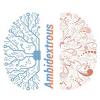Business Transformation Requires Transformational Leaders
Leadership and teaming skills are front and center in times of rapid change. Meet today’s constant disruption head on with expert guidance in leadership, business strategy, transformation, and innovation. Whether the disruption du jour is a digitally-driven upending of traditional business models, the pandemic-driven end to business as usual, or the change-driven challenge of staffing that meets your transformation plans — you’ll be prepared with cutting edge techniques and expert knowledge that enable strategic leadership.
Subscribe to Arthur D. Little's Culture & Leadership Newsletter
Insight
This Executive Update describes the Ambidextrous Organization Development Canvas and how it enables management teams to discuss organization development issues in a common language and make decisions on development aims and organization transformation priorities. (Not a Cutter member? For a limited time, you can download your complimentary copy here.)
Yiannis Kanellopoulos addresses a key issue that we need to satisfactorily tackle: the accountability of algorithmic systems. Automated decision making can go seriously wrong, and hence, evaluating an algorithmic system and the organization that utilizes it in terms of their accountability and transparency assumes ever greater importance.
Daniel Power and Ciara Heavin discuss the need for — and the benefits of — automating decisions and decision processes and explore major areas of decision automation. They examine emerging, innovative sensing technologies — such as ambient intelligence and the IoT — that support decision automation and identify five major challenges and opportunities associated with deploying decision automation and sensors.
Mohan Babu K presents a roadmap for rolling out RPA and examines RPA solutions from key vendors. He then presents a snapshot of real-world stories of RPA adoption across industry domains and, based on his personal experience, recommends five key design topics to consider in rolling out scalable RPA solutions.
Designing for Smart Automation
Aravind Ajad Yarra emphasizes that automation is most effective when humans and machines work together to deliver business outcomes and recommends that automation be designed in harmony with human experiences and business processes. He outlines three types of automation — experience automation, process automation, and platform automation — on which smart automation manifests, considers some smart automation fallacies, and examines how a design thinking approach can successfully be applied to smart automation.
In her article, Prerna Lal discusses the use of ML techniques to address cyberthreats and explores the benefits of AI-based cybersecurity solutions.
Drones: Enterprise Mission Ready
Helen Pukszta outlines several potential enterprise applications of drones in different industry sectors with illustrative real-world examples. She briefly highlights how Part 107 of Chapter 14 of the US Code of Federal Regulations redefines commercial drone use and the risks drones pose. She also discusses the challenges and limitations of today’s drones and how those concerns are being addressed. The barriers to employing drones for business are quickly melting away, and it’s time to pursue the opportunities that drones present, she advises.
Paul Clermont discusses the adoption and impact of AI for automation. After a brief history of AI, Clermont discusses the dangers AI poses. Though technologists have perceived the dangers for some time, he notes that only now are the dangers starting to draw the attention of ordinary citizens and politicians. On a positive note, he outlines the measures that government, the tech industry, regulatory agencies, and the public are taking to address major dangers that AI and its applications present. He emphasizes government’s role in tackling the issues surrounding the use of AI and identifies a few specific areas that government should address.



















